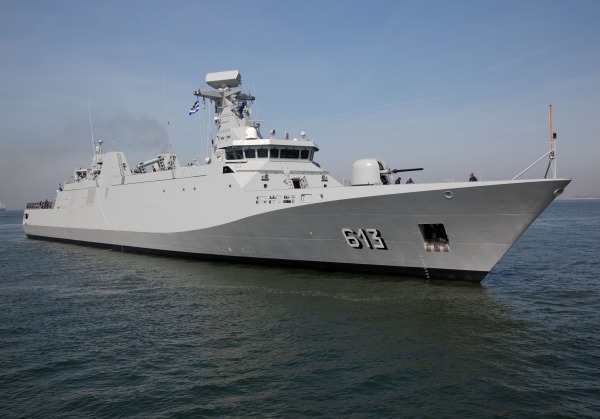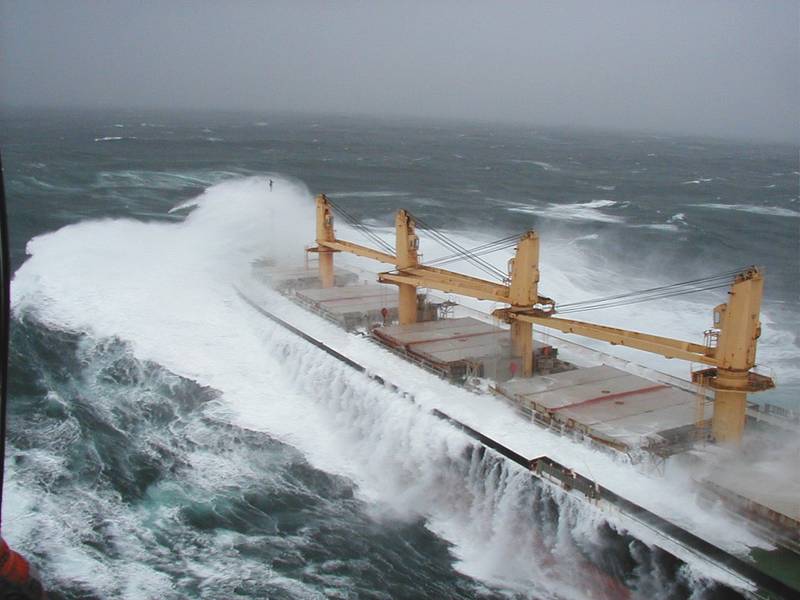
Welcome to MSW’s Scuttlebutt! Here’s the news for the day.

On Display - HMS Hood
MSW Crewmember Kostas Katseas (Angeleyes) sails the high seas with a wonderful HMS Hood.

Successful Start of Sea Acceptance Trials of the First Multi Mission Frigate for the Royal Moroccan Navy
Source: Damen Schelde Naval Shipbuilding
The 105 meter-long SIGMA class frigate, built by Damen Schelde Naval Shipbuilding for the Royal Moroccan Navy, left Vlissingen on the 6th of May for her sea acceptance trials in the North Sea, right on schedule as agreed in the contract.
During the SAT, an extensive program will be carried out in which the platform as well as the sensor weapons and communications suite will be tested.
The second frigate of 98 meters is scheduled for sea trials at the end of 2011 as the third frigate, also 98 meters long, is still under construction at the Damen yard in Vlissingen, to be launched in September this year.

The three SIGMA-class frigates for the Royal Moroccan Navy have been designed according to Schelde Naval Shipbuilding's revolutionary SIGMA approach and are a further development of the SIGMA-corvettes for the Indonesian Navy. The SIGMA approach applies modularity in many areas.
The Moroccan SIGMA Class frigates equipped to conduct the traditional naval tasks as well as maritime security operations. The vessels are also suited to support humanitarian aid operations.
The Cost-Effectiveness of Nuclear Power for Navy Surface Ships
Source: Congressional Budget Office
In recent years, the Congress has shown interest in powering some of the Navy's future destroyers and amphibious warfare ships with nuclear rather than conventional (petroleum-based) fuel. In this study, the Congressional Budget Office estimated the difference in life-cycle costs (the total costs incurred for a ship, from acquisition through operations to disposal) between powering those new surface ships with nuclear reactors and equipping them with conventional engines.
The U.S. Navy plans to build a number of new surface ships in the coming decades, according to its most recent 30-year shipbuilding plan. All of the Navy's aircraft carriers (and submarines) are powered by nuclear reactors; its other surface combatants are powered by engines that use conventional petroleum-based fuels. The Navy could save money on fuel in the future by purchasing additional nuclear-powered ships rather than conventionally powered ships. Those savings in fuel costs, however, would be offset by the additional up-front costs required for the procurement of nuclear-powered ships.
To assess the relative costs of using nuclear versus conventional propulsion for ships other than carriers and submarines, the Congressional Budget Office (CBO) developed a hypothetical future fleet, based on the Navy's shipbuilding plan, of new destroyers and amphibious warfare ships that are candidates for nuclear propulsion systems. Specifically, CBO chose for its analysis the Navy's planned new version of the DDG-51 destroyer and its replacement, the DDG(X); the LH(X) amphibious assault ship; and the LSD(X) amphibious dock landing ship.
CBO then estimated the life-cycle costs for each ship in that fleet—that is, the costs over the ship's entire 40-year service life, beginning with its acquisition and progressing through the annual expenditures over 40 years for its fuel, personnel, and other operations and support and, finally, its disposal.
CBO compared lifecycle costs under two alternative versions of the fleet: Each version comprised the same number of ships of each class but differed in whether the ships were powered by conventional systems that used petroleum-based fuels or by nuclear reactors.
Estimates of the relative costs of using nuclear power versus conventional fuels for ships depend in large part on the projected path of oil prices, which determine how much the Navy must pay for fuel in the future. The initial costs for building and fueling a nuclear-powered ship are greater than those for building a conventionally powered ship. However, once the Navy has acquired a nuclear ship, it incurs no further costs for fuel.
If oil prices rose substantially in the future, the estimated savings in fuel costs from using nuclear power over a ship's lifetime could offset the higher initial costs to procure the ship. In recent years, oil prices have shown considerable volatility; for example, the average price of all crude oil delivered to U.S. refiners peaked at about $130 per barrel in June and July 2008, then declined substantially, and has risen significantly again, to more than $100 per barrel in March of this year.
CBO regularly projects oil prices for 10-year periods as part of the macroeconomic forecast that underlies the baseline budget projections that the agency publishes each year. In its January 2011 macroeconomic projections, CBO estimated that oil prices would average $86 per barrel in 2011 and over the next decade would grow at an average rate of about 1 percentage point per year above the rate of general inflation, reaching $95 per barrel (in 2011 dollars) by 2021. After 2021, CBO assumes, the price will continue to grow at a rate of 1 percentage point above inflation, reaching $114 per barrel (in 2011 dollars) by 2040.
If oil prices followed that trajectory, total life-cycle costs for a nuclear fleet would be 19 percent higher than those for a conventional fleet, in CBO's estimation. Specifically, total life-cycle costs would be 19 percent higher for a fleet of nuclear destroyers, 4 percent higher for a fleet of nuclear LH(X) amphibious assault ships, and 33 percent higher for a fleet of nuclear LSD(X) amphibious dock landing ships.
To determine how sensitive those findings are to the trajectory of oil prices, CBO also examined a case in which oil prices start from a value of $86 per barrel in 2011 and then rise at a rate higher than the real (inflation-adjusted) growth of 1 percent in CBO's baseline trajectory. That analysis suggested that a fleet of nuclear-powered destroyers would become cost-effective if the real annual rate of growth of oil prices exceeded 3.4 percent—which implies oil prices of $223 or more per barrel (in 2011 dollars) in 2040.
Similarly, a fleet of nuclear LH(X) amphibious assault ships would become cost-effective if oil prices grew at a real annual rate of 1.7 percent, implying a price of $140 per barrel of oil in 2040—about the same price that was reached in 2008 but not sustained for any length of time. A fleet of nuclear LSD(X) amphibious dock landing ships would become cost-effective at a real annual growth rate of 4.7 percent, or a price in 2040 of $323 per barrel.
The amount of energy used by new surface ships—particularly those, such as destroyers, that require large amounts of energy for purposes other than propulsion—could also be substantially higher or lower than projected. Employing an approach similar to that used to assess sensitivity to oil prices, CBO estimated that providing destroyers with nuclear reactors would become cost-effective only if energy use more than doubled for the entire fleet of destroyers.
The use of nuclear power has potential advantages besides savings on the cost of fuel. For example, the Navy would be less vulnerable to disruptions in the supply of oil: The alternative nuclear fleet would use about 5 million barrels of oil less per year, reducing the Navy's current annual consumption of petroleum-based fuels for aircraft and ships by about 15 percent.
The use of nuclear power also has some potential disadvantages, including the concerns about proliferating nuclear material that would arise if the Navy had more ships with highly enriched uranium deployed overseas. CBO, however, did not attempt to quantify those other advantages and disadvantages.

McCann Rescue Chamber
Today’s website is McCann Rescue Chamber. Enjoy.
This Day in U.S. Naval History
1917 - First U.S. convoy to cross North Atlantic during World War I leaves Hampton Roads, Va.
1918 - USS Olympia anchors at Kola Inlet, Murmansk, Russia, to protect refugees during Russian Revolution.
1939 - First and only use of Vice Adm. Allan McCann's Rescue Chamber to rescue 33 men from sunken USS Squalus (SS 192).
1941 - Authorization of construction or acquisition of 550,000 tons of auxiliary shipping for Navy.
1945 - Fast carrier task force aircraft attack airfields in southern Kyushu, Japan.
1945 - Nine U.S. ships damaged by concentrated kamikaze attack off Okinawa.
Diorama Idea of the Day

The A cargo ship in rough seas. To see the original high resolution photo, click here.
Gator











